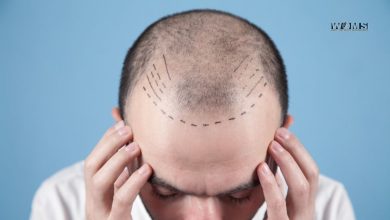Job Satisfaction Among Dermatology Physicians

According to Medscape’s 2020 Lifestyle, Happiness, and Burnout Report, dermatologists are best at finding happiness at their job among physicians. In the following, we will take a closer look at some of the main aspects contributing to these results.
While financial compensation is a leading factor of professional fulfillment across all domains, it is not the only one. A healthy work-life balance, a positive physician-patient relationship, the opportunity for professional growth, and low job stressors also influence satisfaction rates among dermatology physicians.
Financial Compensation
Salary is a leading factor in job satisfaction across all domains of work, but other aspects come into play as well. Among physicians, dermatologists (61%) are most satisfied with their salaries. Currently, the median salary for a dermatologist in the U.S. is $352,600, but based on experience and location, it can range between $257,651 and $465,125.
Despite the high rates of job and salary satisfaction reported by dermatologists, this is not one of the highest-paying specialties. The list is topped by neurosurgery, thoracic surgery, and orthopedic surgery. Therefore, other forces must be at play as well.
Work-Life Balance
Dermatology is among the leading specialties when it comes to work-life balance. Ensuring a healthy workload and schedule is the responsibility of both employers and employees. Healthcare facilities can improve work-life balance by:
- Flexible work schedules.
- Reducing work-related stress (e.g. spaces for physicians to relax).
- Offering additional benefits (e.g. a daycare option).
At the same time, physicians have to play their part and:
- Take breaks whenever they can during work.
- Set clear boundaries between work and personal life.
- Allow time to pamper themselves.
- Spend their free time with family and friends.
A Positive Doctor-Patient Relationship
Dermatology is among the specialties that frame a favorable setting for a solid doctor-patient relationship. By the nature of their job, these physicians have the opportunity to help people rise above the stigma of a visible difference.
Having a skin condition does not only affect someone on a physical level. It can leave a mark on psychological and emotional well-being and impact social interactions. Dermatologists consider it a privilege to help people lead more fulfilled lives and learn to be comfortable in their skin.
Education and prevention are essential tasks for a dermatology physician. Knowledge and action are the best preventative measures. Patients must first understand what stressors lead to the development of their condition. Then, as active participants in their own care, they must take the appropriate steps to heal and prevent the ailment from reappearing.
A patient with a skin condition does not only visit a dermatologist once. Healing is a lengthy process that requires several meetings. During these consultations, the physician and patient become increasingly familiar with each other and more comfortable discussing the implication of medical issues. It takes time for a patient to fully trust their physician, and dermatology favors this.
Patients who access these healthcare services tend to report high levels of happiness. This positive attitude, in turn, also influences physicians. It can increase the sense of worth for their jobs and general job satisfaction.
The Opportunity for Professional Growth
While some physicians who choose other specialties may have to compromise between medicine and surgery, dermatology harmoniously combines both. Therefore, the everyday work tasks may vary greatly, and monotony is unlikely to set in.
Advancements in new procedures, technologies, or a deeper understanding of conditions are just a few of the things that keep dermatologists always on their toes. There is always room to learn more and grow as an expert. Many physicians have the opportunity to explore the latest advancements in their field, as dermatology jobs in Texas and other states tend to offer substantial support for professional growth.
The Issue of Burnout
Burnout is a work-related syndrome characterized by emotional, mental, and physical exhaustion triggered by prolonged exposure to stress. This is a true public healthcare crisis that has a multi-level impact on physicians, patients, and institutions. The researcher’s highlight that over 50% of burnout cases among practicing physicians and physicians-in-training have severe adverse effects on all those involved in the healthcare system.
Unfortunately, burnout is a common phenomenon among physicians, but dermatologists tend to be more sheltered from it. However, this trend is volatile. If until recently, this specialty was frequently at the end of lists with physician burnout rates based on domain, that is no longer the case.
A three-year study about changes in burnout and work-satisfaction rates among U.S. physicians has reported significant results among dermatologists. At the start of the research, the specialty had low burnout rates and high professional satisfaction rates. During the three years covered by the study (2011-2014), the field had the highest jump in burnout rates (from 32% to 57%). However, high work satisfaction remained a constant.
Reports from 2019 identify a 44% burnout rate among physicians and 38% among dermatologists. One of the main reasons for these stats is the association between a specialty and emergency healthcare. Dermatology is a non-emergency outpatient field and tends to be less exposed to occupational stress.
Now the COVID-19 virus creates an unprecedented framework for all healthcare professionals. In a recent study on dermatologists’ mental health during the pandemic, 77.2% of participants reported mental distress. What is important to remember from these data sets is that burnout rates fluctuate based on socio-economical parameters.
Final Thoughts
If you are a physician contemplating a future career choice, job satisfaction is certainly something to consider. Dermatologists tend to top surveys on work satisfaction for several reasons. Although it is not the highest paying specialty, the salary is generous enough, and it comes with a wide range of added benefits.
Lower levels of work-related stress and a chance to build a genuine physician-patient relationship are some of the main selling points of the specialty. Also, there is no need to compromise between surgery and medicine; this field has a bit of everything. Finally, a healthy work-life balance ensures that the specialists enjoy a fulfilling personal life beyond the work schedule.




